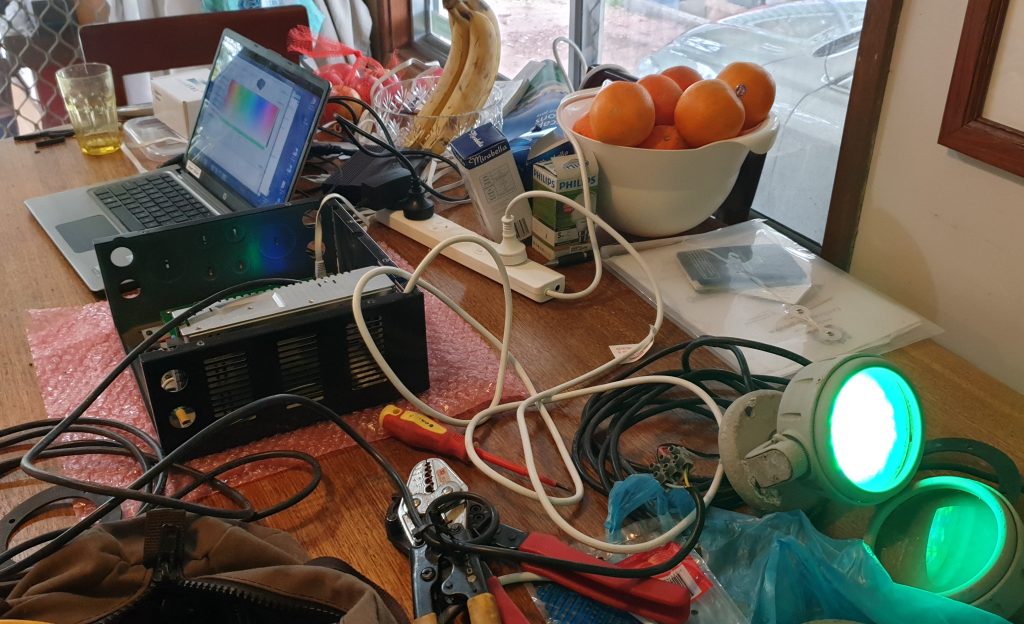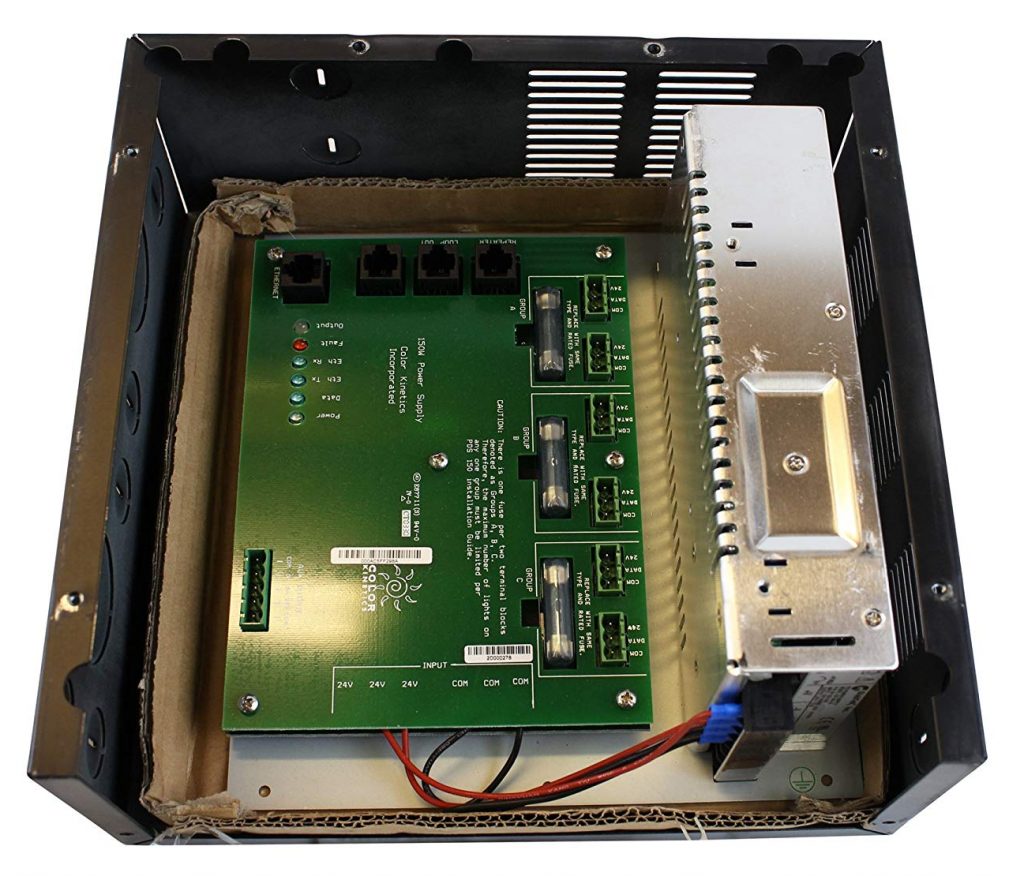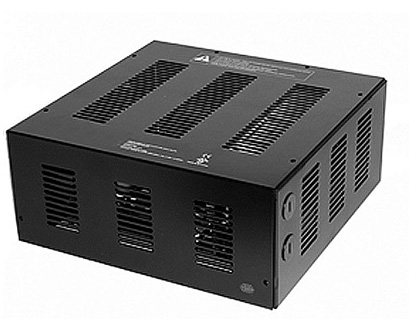The Color Kinetics PDS-150e is an integrated power supply and driver that was popular during the early 2000’s. It is also the “magic” piece that I need for the Solar Mallee Trees project I’ve been working on.
Inside the unit is a power supply and integrated driver. Each of the six output channels are capable of driving up to 25W of RGB LED’s. So this is easily able to power a single Colorburst 4″ RGB LED per channel, they use just 10W. There are four RJ45 connectors across one size of the PCB that present Ethernet, DMX IN, DMX LOOP and DMX Repeater capabilities. I was certainly keen to see what we could do with the Ethernet interface. For these RGB LED drivers Color Kinetics offers a tool called QuickPlay Pro (TM) as a free download for Windows PC’s.

To use the Ethernet interface is relatively straight forward. The PDS-150e device is already programmed with an IP address somewhere within the classic 10.x.x.x Class A network. So I configured a Windows 7 laptop Ethernet interface with the arbitrary IP of 10.0.73.1 with a subnet mask of 255.0.0.0. I was simply crossing my fingers this wasn’t where the controller was, but it would allow the laptop and PDS-150e to find each other. I was pleased once QuickPlay Pro was started that I could find my PDS-150e listed in the “controller” drop down box. At a guess QuickPlay Pro and the PDS-150e either listen to a broadcast address or have some form of mDNS capabilities to “discover” each other.
Once I had connected QuickPlay Pro to the PDS-150e I was able to test the lamps individually, experiment with colour washing and configure the DMX channels and addressing. Below is an example of the colour wash function within QuickPlay Pro;
I will have to say I’ve been doing this type of work for many years and Lighting Control Software has always been a painful experience. Either the software or devices would do “odd” things, not work, fart, spit, sulk or have quirks that required work around’s. However I was pleasantly surprised when QuickPlay Pro just worked, did what it said it would do without any fuss and or bother. So the Color Kinetics Engineering team have done a great job making this system work so well.
Once I’d gotten over my surprise it was a simple task to configure the RGB Lamps that I had into a sequential series of DMX addresses. Each of the Colorburst RGB lamps uses one DMX channel per colour (i.e. 3 channels for RGB), so I simply stringed the lamps together starting at address one;
DMX ADDR: 01 02 03 04 05 06 ........ 13 14 15 CB4 CH#: R1 G1 B1 R2 G2 B2 ........ R5 G5 B5 Lamp \---(1)---/ \---(2)---/ ........ \---(5)---/
One thing I did notice is that each Colorburst 4″ RGB lamp has a unique serial number that is displayed in QuickPlay Pro. This suggests that once each lamp is configured this won’t change if you start swapping the port it is connected too. I was pleased to find this is indeed the case, so once I know which tree each lamp is mounted too I can reconfigure the DMX addressing to be a little more logical.
Now I just need to start sending DMX at the controller and see if the lamps respond. Time to go and find a RS485 interface.


